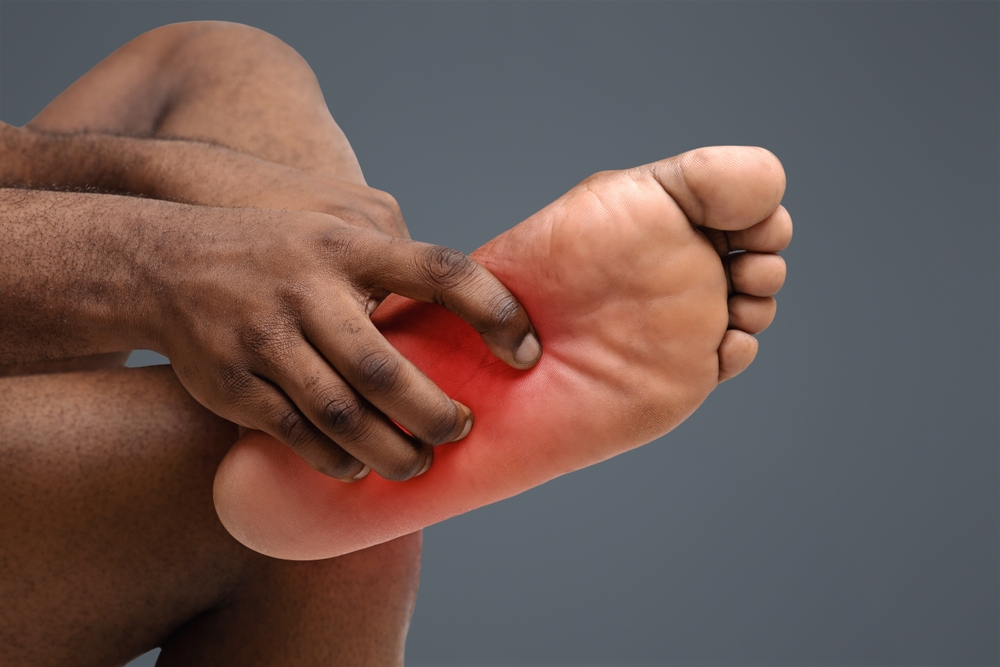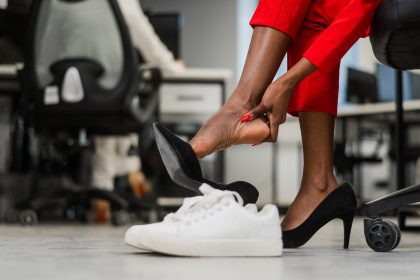Foot pain is often dismissed as a minor inconvenience, blamed on tight shoes or long days standing. Yet, in 2025, with 1 in 3 adults reporting chronic pain, experts recognize that discomfort in the feet can signal serious health issues far beyond the sole. From diabetes to heart disease, the feet act as a window into overall wellness, revealing problems that demand attention. Ignoring these signs can worsen underlying conditions, affecting mobility and quality of life. Here are five alarming ways foot pain points to broader health concerns and how to address them mindfully.
1. Nerve damage from diabetes
Persistent foot pain, often described as burning, tingling, or numbness, can be an early warning of diabetic neuropathy, a complication of diabetes affecting 50% of patients. In 2025, with 38 million Americans living with diabetes, high blood sugar levels damage nerves, particularly in the feet, reducing sensation or causing sharp discomfort. This pain, sometimes paired with skin changes or slow-healing sores, signals the need for better glucose control. Left unchecked, it risks infections or amputations, with 150,000 diabetes-related amputations annually. Regular blood sugar monitoring, proper footwear, and daily foot inspections can prevent progression, while medical checkups catch issues early, preserving mobility and health.
2. Poor circulation linked to heart disease
Foot pain accompanied by coldness, swelling, or cramping may indicate poor blood flow, often tied to cardiovascular issues like peripheral artery disease. In 2025, heart disease remains the leading cause of death, affecting 20% of adults over 65. Narrowed arteries reduce blood supply to the feet, causing pain during activity or even at rest, along with hair loss or shiny skin on the legs. These symptoms suggest the heart is struggling to pump efficiently, raising risks of heart attack or stroke. Lifestyle changes like quitting smoking, adopted by 12% of Americans yearly, and low-impact exercise like walking can improve circulation, while medical tests assess heart health.
3. Joint inflammation from arthritis
Throbbing or stiff foot pain, especially in the toes or heels, can signal arthritis, a condition affecting 54 million Americans in 2025. Rheumatoid arthritis or osteoarthritis causes joint inflammation, leading to swelling, warmth, or difficulty moving the feet. Unlike normal soreness, this pain persists and worsens with activity, often spreading to other joints. Families notice loved ones limping or avoiding walks, impacting daily life. Anti-inflammatory diets, rich in omega-3s and used by 30% of arthritis patients, along with supportive shoes and physical therapy, can ease symptoms. Early diagnosis through blood tests or imaging prevents joint damage, maintaining mobility.
4. Nerve compression from spinal issues
Foot pain that radiates from the lower back or feels like electric shocks may stem from spinal problems, such as a herniated disc or sciatica, affecting 40% of adults at some point. In 2025, with sedentary lifestyles rising due to remote work, compressed nerves in the spine send pain, numbness, or weakness to the feet. This discomfort, often worse after sitting or standing long periods, signals misalignment or disc damage. Families observe loved ones struggling with balance or favoring one leg. Stretching routines, ergonomic chairs, and core-strengthening exercises like yoga, practiced by 15% of Americans, can relieve pressure, while medical imaging pinpoints the cause for targeted treatment.
5. Kidney dysfunction causing swelling
Foot pain paired with swelling, or edema, can point to kidney issues, which affect 37 million Americans in 2025. When kidneys fail to filter fluids properly, water pools in the feet, causing puffiness and discomfort, especially after standing. This may accompany fatigue, reduced urine output, or skin changes, signaling conditions like chronic kidney disease. With 1 in 7 adults at risk, often linked to diabetes or hypertension, this symptom demands attention. Reducing salt intake, a strategy used by 25% of patients, and staying hydrated can ease swelling, while blood tests monitor kidney function to prevent further damage.
Why this matters in 2025
Foot pain is more than a nuisance—it’s a health alarm that 60% of adults ignore, risking delayed diagnosis of serious conditions. In 2025, with healthcare costs rising and 20% of Americans skipping routine checkups, dismissing symptoms like tingling or swelling can lead to irreversible damage, from amputations to heart failure. Societally, the tendency to “tough out” pain, especially among men, who seek care 30% less often, exacerbates outcomes. Critically, access disparities—rural areas have 40% fewer specialists—mean underserved communities face higher risks. Recognizing foot pain as a signal empowers proactive care, reducing the $560 billion annual cost of chronic disease and preserving quality of life.
How to address foot pain
Taking foot pain seriously starts with observation. Track symptoms—duration, intensity, and triggers—and note accompanying signs like swelling or numbness. Daily foot checks, practiced by 10% of diabetics, catch sores or changes early. Wear supportive shoes with arch support, as 70% of foot pain links to improper footwear, and avoid prolonged standing. Home remedies like Epsom salt soaks or stretching can ease mild discomfort, but persistent pain warrants a doctor’s visit, ideally a podiatrist or primary care provider. Blood tests, imaging, or nerve studies can pinpoint causes, while lifestyle tweaks—weight loss, exercise, or smoking cessation—address root issues. These steps prevent escalation and promote long-term health.
Looking toward a healthier life
In 2025, foot pain is a call to action, not a fact of life. Symptoms like tingling, swelling, or cramping reveal issues—diabetes, heart disease, arthritis, spinal problems, or kidney dysfunction—that demand attention. By listening to their feet, people can catch problems early, avoiding the 25% of chronic disease cases that go undiagnosed until advanced. The journey isn’t easy, especially with healthcare barriers, but proactive steps like proper footwear, regular checkups, and lifestyle changes make a difference. Families play a role, too, encouraging loved ones to seek care. As wellness takes center stage, addressing foot pain becomes a path to whole-body health, ensuring a vibrant, mobile 2025.
















